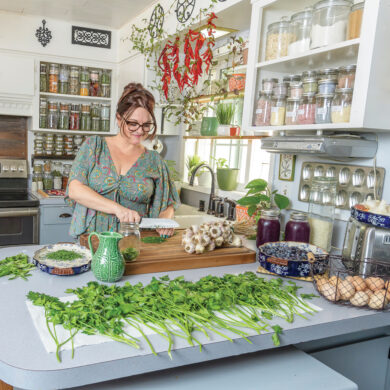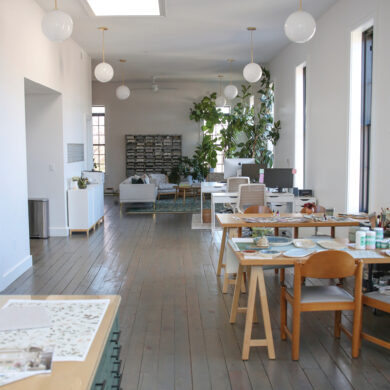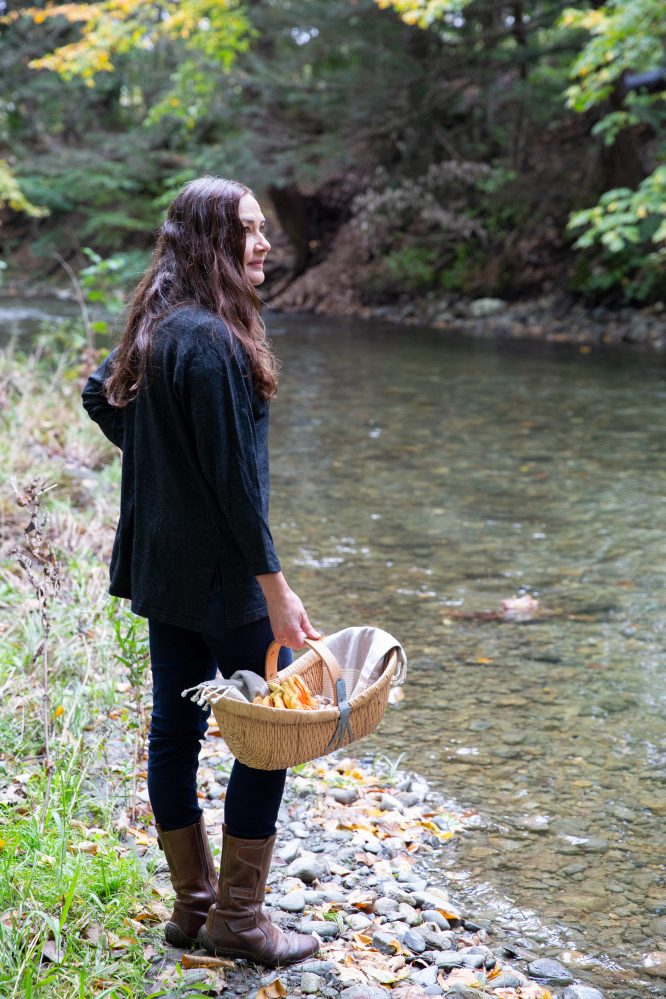
I grew up in a small town on the Canadian border in the Saint Lawrence Valley just south of Montreal in New York State, the town where my father, who is of Quebecois and French descent, also grew up. His mother, a wonderful cook who loved to eat, traveled the world and came back with stories about the foods she had tasted and seen. Our business today, Tavernier Chocolates, is derived from our family name, inspired by my grandmother’s adventurous spirit.
During my childhood, we traveled to Montreal and Buffalo, New York where my mother grew up to take in the art, science and natural history museums. Summers were spent hiking and camping in the nearby Adirondacks, with my father carrying a small feast up the mountain in an Adirondack pack basket or tucking it into our canoe. Located in my hometown was an old mill building that had been converted to an arts center—where I took art and dance lessons. It reminds me of the industrial mill our chocolate kitchen resides in today.
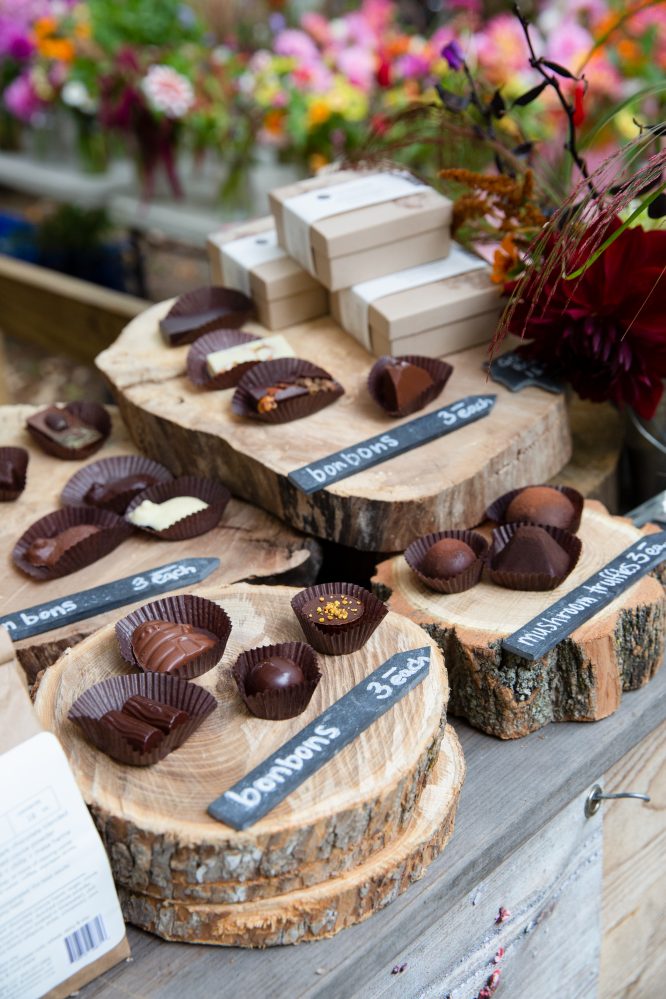
As a college student studying biology and art, I participated in field and lab work for my botany professors, making scale drawings of plants and their cross-sections through a microscope. Years of jobs and study in the arts and sciences ensued, interlaced with working with food in restaurants and cafes. During this time I worked as an artist and graphic designer and gained experience working front and back of the house for restaurants and cafes on both coasts and in Europe—eating and experimenting with recipes from the different cuisines in each country and city I lived in and traveled to.
My motivation is not to be different for the sake of being different, but to instead be driven by the spirit of discovery and adventure, and create more of a connection between ingredients—how they grow, how we harvest them, and awareness of what we eat.
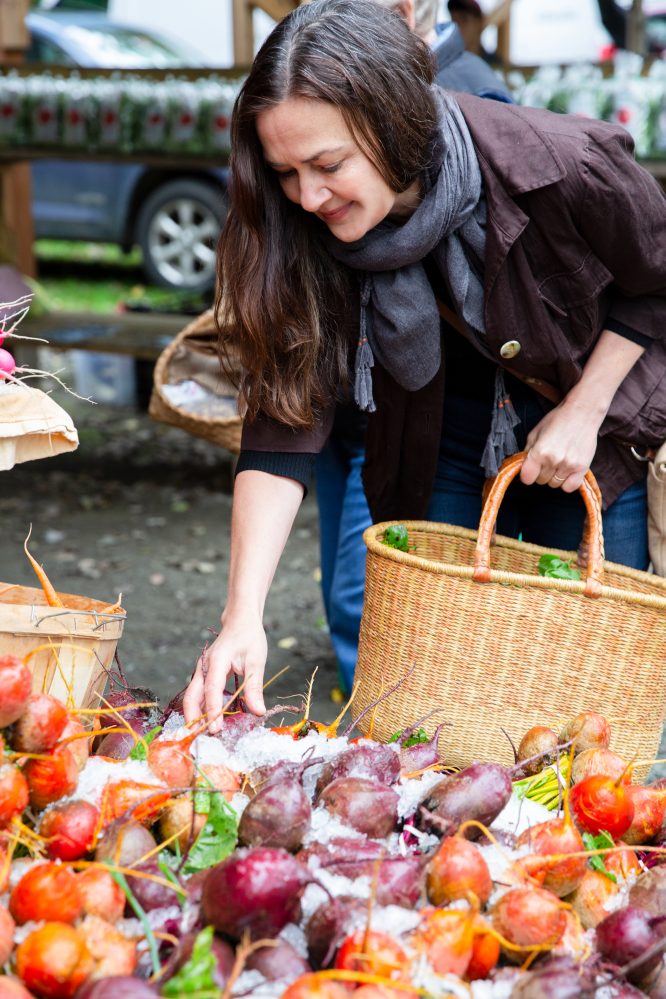
I eventually met my musician husband in San Francisco, and together we explored the Bay Area’s burgeoning culinary scene, touring California’s wine regions, hiking and camping in the nearby mountains and deserts, and taking in a lot of art and music, the perfect combination to woo me.
We now live in Brattleboro, a small town along the Connecticut River in Southern Vermont. Being in Vermont re-awakened something in me—a certain quality of life and closeness to the natural world commingled with self-sufficiency and creativity. We live in a community of farmers, musicians and artists who make cheeses, brew beer, boil their own maple syrup, press apples, grow a lot of their own food and are politically active. Our home abuts a parcel of preserved land that has 11+ miles of hiking trails winding through forests and fields, so we can walk through our backyard and be in the middle of the woods all while enjoying the bustling energy of living in town. Our business is also in town, a great convenience, located in a brick 1910 mill building that has been converted into a business incubator, home to around 50 different entrepreneurs, musicians and artists. It’s quick and easy to travel to Boston, New York and Montreal while living in the bucolic splendor of Vermont.
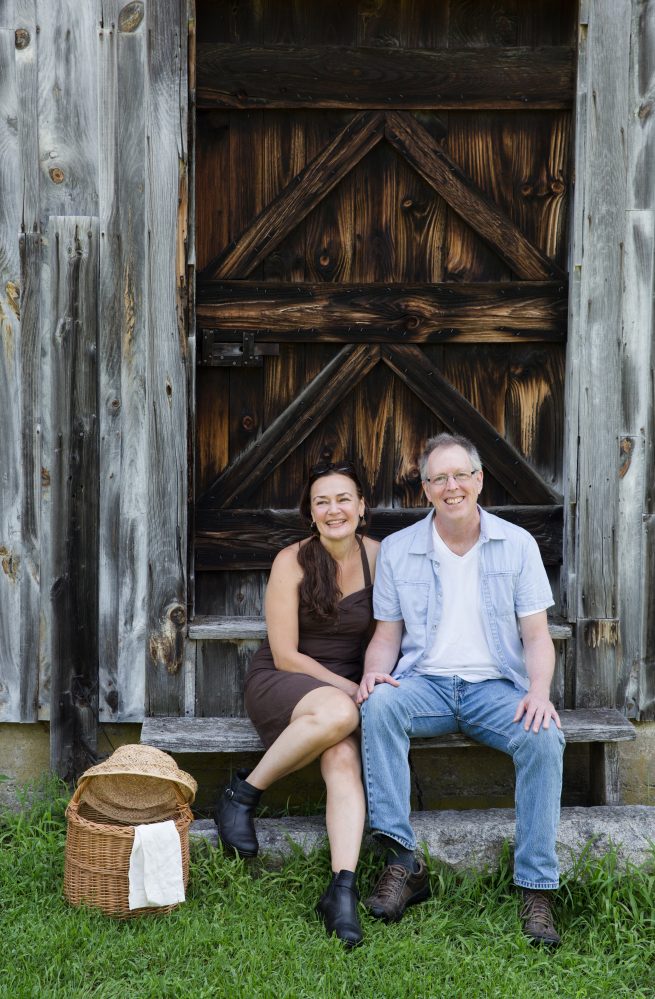
I first realized I wanted to make my passion for working with food a business, and chocolate in particular, when I began making truffles at home, and enthusiastic friends asked if they could purchase them for gifts, weddings and events. I continued honing and learning new techniques, sourcing ingredients from our farmers’ market and trying out recipes on friends. When a restaurant asked if they could put my chocolates on their menu, my husband and I were both at points in our life where we were ready for change, so we decided to dive in and start our business.
I am lucky to work with one of the world’s most popular ingredients, in that most people are game to try something if it involves chocolate.
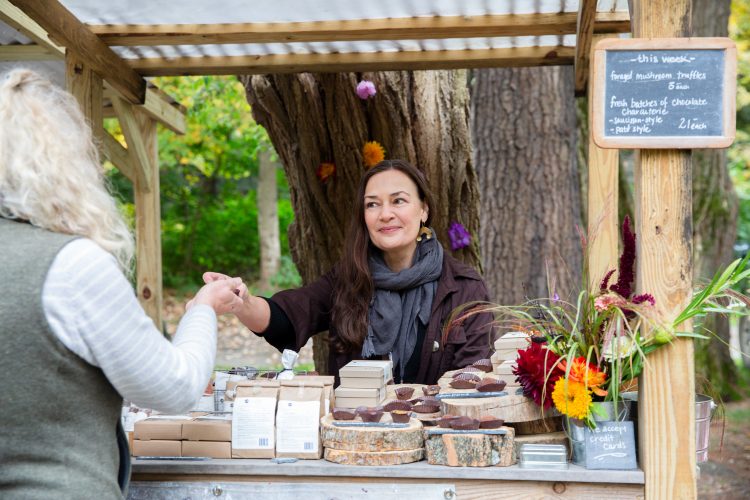
My husband and I split up the responsibilities of Tavernier Chocolates, in general, each taking on the aspects of business that we have the most experience or natural talent for. Essentially, I am the creative-end and my husband, who has managed and grown small businesses for years is the business-end, but within that, there is a lot of crossover, mutual contributions and negotiation; we are a hands-on, collaborative team. Some of our biggest accomplishments are resilience, resourcefulness and inventiveness.
Holiday production, however, is a big challenge as it is our busiest time of the year when we are usually working seven days a week. We also come up with our holiday offerings in June so imagining what will resonate with customers and be festive and seasonal for holidays when outside it is profusely green and hot and humid is an interesting exercise. We are now looking into a larger tempering machine that will make our process more efficient and increase our output. The balance of putting out more funds toward equipment and employees to put more time and energy into the places that will increase output and allow more time for creativity and downtime is a constant juggle, making sure that the return on investment is in the business’ favor.

Our factory shop is attached to our kitchen space in the cotton mill, a place where we have a social outlet away from kitchen work and can connect with customers and other business people in the building when they stop in to chat, get coffee and a treat. It’s not a conventional chocolate shop in that we display current bonbon offerings in a glass-topped specimen box alongside a typeset box filled with examples of the flora and fauna that inspired them. Our farmers’ market booth mirrors the same design. We source many of our ingredients from the area’s plethora of top-notch farmers and foragers, as well as, our own herb garden and the trails behind our home.
“Everything is raw material. Everything is relevant. Everything is usable. Everything feeds into my creativity.” —TWYLA THARP
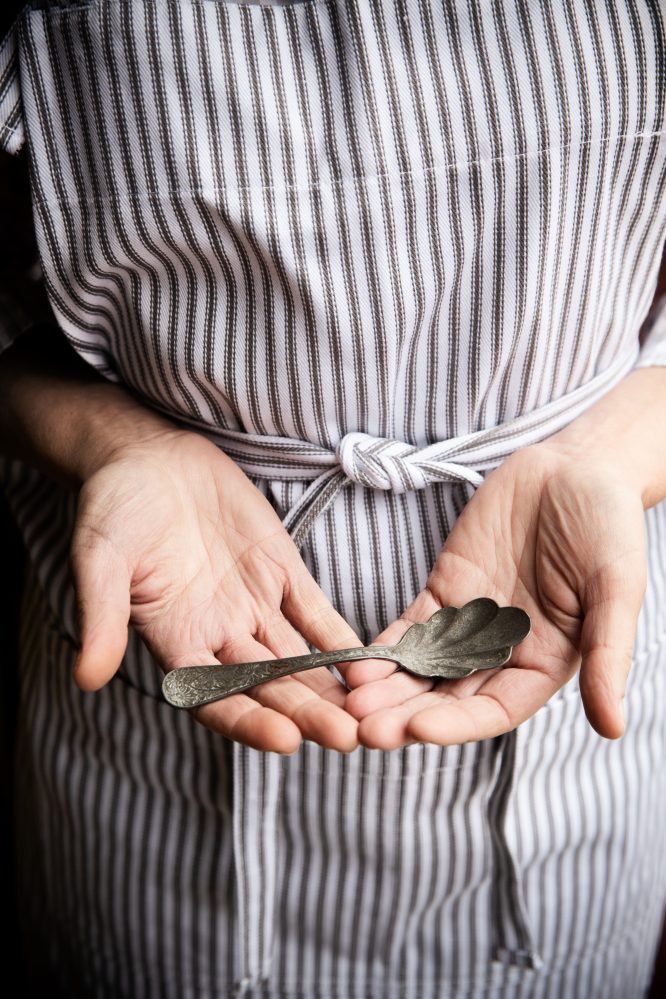
Chocolate’s versatility as an ingredient, from a traditional bitter and spiced drink in Mayan traditions to sweet and creamy European confectionery, is motivating to me. I prefer savory flavor combinations and am inspired by pairing chocolate with seasonal ingredients that often lead to unusual combinations and flavor profiles.
While I use a lot of non-traditional ingredients in my confections, and many that are considered medicinal or therapeutic, I won’t put a product out there unless it tastes really, really good. We are most thrilled when someone is skeptical about a flavor, like mushrooms, spruce tips or cheeses, and then get to watch the expression of wonder and excitement on their face when they are pleasantly surprised and like what they’ve tasted.
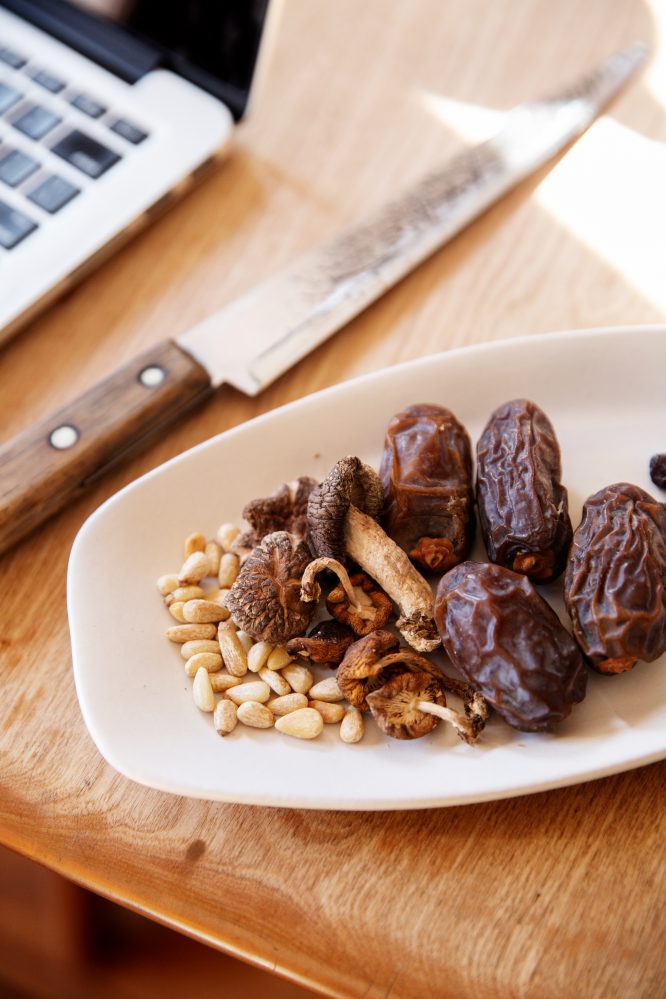
Like fine wine and craft coffee, each year and every cacao growing region produces a different flavor profile depending on the weather and other environmental factors, so the range of chocolate pairing possibilities is wide and exciting. We are constantly trying different chocolates, mostly from South American single origins that are fairly traded, and pairing them with regional ingredients to find harmonious combinations.
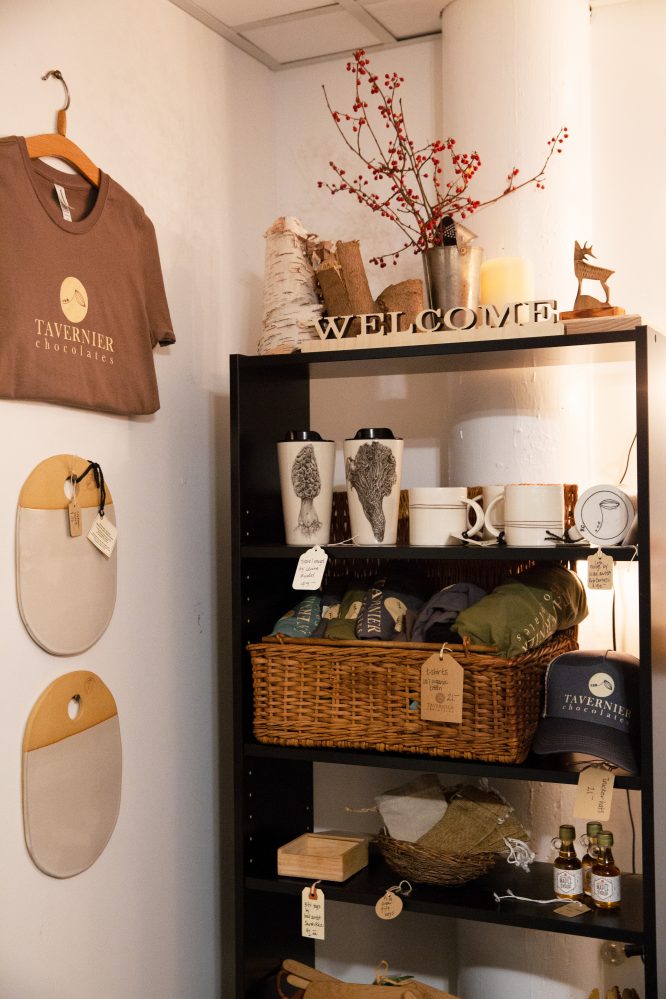
The craft of making confections by hand and coming up with a form that mirrors what you will taste when you bite into it feels like art and theatre—I am creating an experience and telling a story as much as a delicious product.
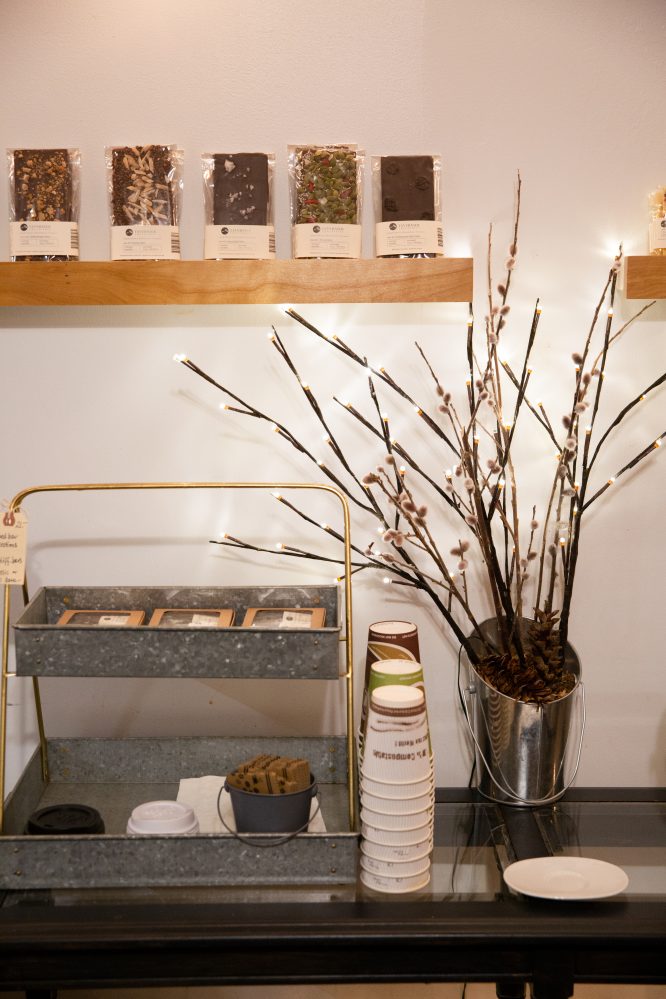
While we want to grow as a business and create jobs in our area, developing into a large manufacturer is not our goal; by mindful design, we are hands-on, artisanal and personal. My relationships with other chefs, chocolatiers, farmers and makers afford me a valuable exchange of ideas, feedback, constructive criticism, support and inspiration and has opened up my life to creativity in a new, wide way that I find so valuable. Connecting with people who are passionate about what drives you opens up conversations and explorations through these relationships and deepens others.
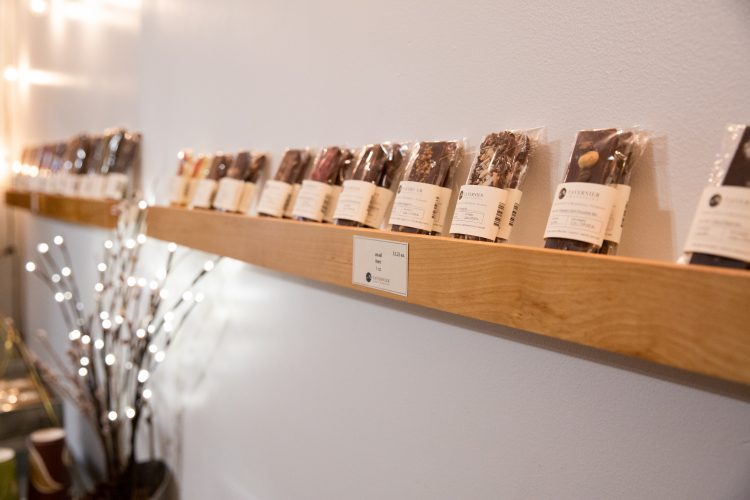
As a business owner, I am not just responsible for the success of the business, but I also have an obligation to that success to my business partner, our employees and our community. It means I contribute to my town by supporting other local businesses with a quality product they can sell and that they feel belongs to them as much as to us. It means using ingredients in a way that honors the hard work and artistry of the people who made and grew them. It means supporting local and global organizations that do well for our community and our planet through contributions. It means supporting a sustainable and mindful way of sourcing ingredients and presenting my products to the world. It means I must always strive to put out a thoughtful, high-quality product that I can be proud of and to take chances and stretch what I imagine I can do. It means I must always be curious, learning, improving, and exploring.
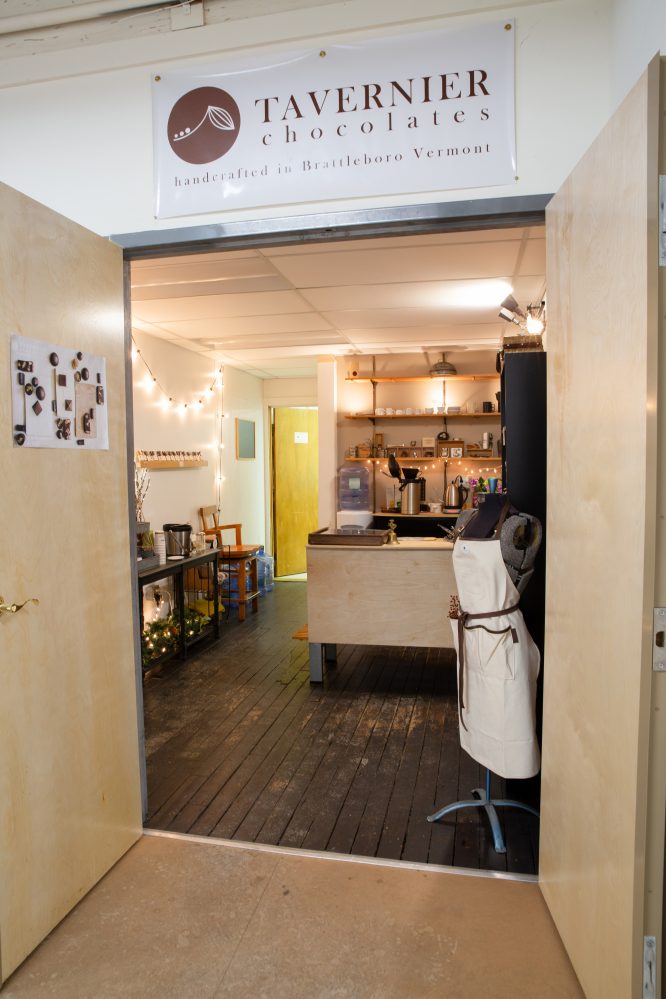
Sweet Advice
-
You can’t be all things to all people, and that’s ok. It’s best, in fact. Find your niche and stick with it; stand out for your singular vision.
-
Be picky about where you sell your products; the shops and/or distributors you partner with are the showroom for your work and should mirror your values and aesthetic.
-
Collaborate! Find other creative people who are making similar things, or producing ingredients or parts that you can use in your products, and exchange ideas or tips—support each other.
-
Make sure your pricing will support your business from the start, and not shock your customers should you have to increase it significantly later to stay above water.
-
Make lists and prioritize. Set up a calendar that clearly marks when projects should begin, along with their deadlines, and delegate lower priority items to employees/volunteers when possible and specialized tasks to a professional.
-
People want to connect with the maker. Show your customers the real, authentic and live human behind the business in social media and on your website.
-
Check into local incubator and commercial kitchen spaces that you can rent by the day or hour when starting. They often have affordable rates, services and equipment that are otherwise cost-prohibitive to invest in when you first begin. Instead, put your resources into growing your customer base and developing your product.


